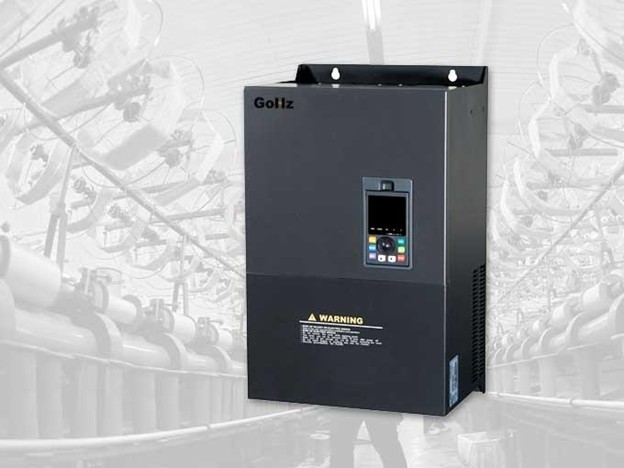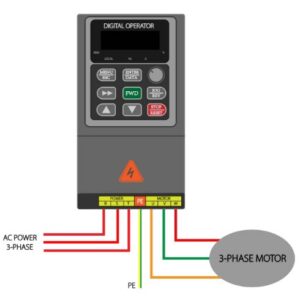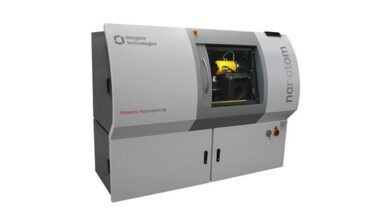Three Phase VFD: The Complete Guide to Variable Frequency Drive Technology

In the realm of industrial motor control, three phase VFD (Variable Frequency Drive) systems have revolutionized how we manage and control electric motors. These sophisticated power electronic devices have become essential components in modern industrial applications, offering unparalleled control over motor speed, torque, and energy consumption while delivering significant operational benefits across diverse industries.
Understanding Three Phase VFD Technology
A three phase VFD is an advanced motor control device that regulates the speed and torque of three-phase AC motors by varying the frequency and voltage of the power supplied to the motor. Unlike traditional motor starters that operate motors at fixed speeds, VFDs provide precise speed control by converting incoming AC power to DC, then reconverting it back to AC at the desired frequency and voltage levels.
The fundamental operating principle involves three main stages: rectification, DC bus filtering, and inversion. During rectification, the incoming three-phase AC power is converted to DC using diode or thyristor bridges. The DC bus section filters and stabilizes this DC voltage using large capacitors. Finally, the inverter section uses power semiconductors, typically IGBTs (Insulated Gate Bipolar Transistors), to recreate three-phase AC output with variable frequency and voltage characteristics.
This sophisticated control mechanism allows a three phase VFD to maintain optimal motor performance across a wide range of operating conditions. The device continuously monitors motor parameters and adjusts output accordingly, ensuring efficient operation while protecting the motor from harmful conditions such as overcurrent, overvoltage, and overheating.
Key Components and Architecture
The architecture of modern three phase VFD systems incorporates several critical components working in coordination. The rectifier section typically employs six-pulse or twelve-pulse configurations, depending on the power rating and harmonic requirements. Higher-power installations often utilize active front-end rectifiers to improve power factor and reduce harmonic distortion.
The DC bus represents the energy storage section, utilizing electrolytic capacitors to smooth the rectified voltage and provide instantaneous power during dynamic load changes. Bus voltage levels typically range from 540V to 800V DC for standard industrial applications, though higher voltages are used in specialized applications.
The inverter section forms the heart of the three phase VFD, generating the controlled three-phase output. Modern inverters use pulse-width modulation (PWM) techniques with switching frequencies ranging from 2kHz to 16kHz. Higher switching frequencies produce smoother motor current waveforms but increase switching losses and electromagnetic interference.
Control electronics include microprocessors, digital signal processors, and specialized control algorithms that manage the entire conversion process. These systems implement sophisticated control strategies such as vector control, direct torque control, and sensorless control techniques that optimize motor performance under varying load conditions.
Operational Advantages and Benefits
Three phase VFD technology delivers numerous operational advantages that have made it indispensable in modern industrial applications. Energy efficiency represents perhaps the most significant benefit, with properly applied VFDs reducing energy consumption by 20-50% in variable-torque applications such as pumps and fans. This efficiency improvement stems from the ability to match motor speed precisely to load requirements, eliminating the energy waste associated with throttling valves, dampers, or mechanical speed control methods.
Precise speed control capabilities allow operators to optimize process parameters and product quality. Many industrial processes benefit from variable speed operation, enabling fine-tuning of production rates, mixing speeds, conveyor velocities, and fluid flow rates. This precision translates directly into improved product consistency and reduced waste.
Motor protection features built into three phase VFD systems extend motor life significantly. These drives provide comprehensive protection against overloads, phase loss, ground faults, and thermal overload conditions. Soft starting capabilities eliminate the mechanical stress and electrical surge associated with across-the-line motor starting, reducing maintenance requirements and extending equipment life.
The ability to implement advanced control strategies such as torque limiting, speed ramping, and programmable acceleration/deceleration profiles enhances both safety and operational flexibility. These features prove particularly valuable in applications involving high-inertia loads or processes requiring precise motion control.
Industrial Applications and Use Cases
The versatility of three phase VFD systems has led to their widespread adoption across numerous industrial sectors. In HVAC applications, 15 hp VFDs control centrifugal fans, pumps, and compressors, providing significant energy savings while maintaining optimal comfort conditions. Variable air volume systems rely heavily on VFD-controlled fans to modulate airflow based on occupancy and thermal loads.
Manufacturing industries utilize three phase VFD technology for conveyor systems, mixers, extruders, and machine tools. The textile industry depends on variable speed control for spinning, weaving, and dyeing processes. Food and beverage processing facilities use 50 hp VFD for 3 phase motor to control pumps, mixers, and packaging equipment, ensuring consistent product quality while minimizing energy consumption.
Water and wastewater treatment facilities represent another major application area, where 10 hp VFDs control pumps, blowers, and mixers. The ability to modulate pump speed based on flow demand eliminates the need for throttling valves and reduces energy consumption dramatically. Additionally, VFDs help maintain consistent pressure in distribution systems while reducing water hammer effects.
The oil and gas industry relies on 200 hp three phase variable frequency drive systems for pipeline pumps, compressors, and drilling equipment. These applications often require explosion-proof enclosures and specialized control algorithms to handle the demanding environmental conditions and safety requirements.
Installation and Configuration Considerations
Proper installation and configuration of three phase VFD systems require careful attention to multiple factors. Electrical installation must consider input power quality, harmonic distortion, and electromagnetic compatibility requirements. Line reactors or harmonic filters may be necessary to meet power quality standards and prevent interference with other sensitive equipment.
Motor compatibility represents another critical consideration, as not all motors are suitable for VFD operation. Standard induction motors can typically operate with VFDs, but motors designed specifically for variable speed operation offer better performance and longevity. Special attention must be paid to motor cooling at low speeds, as reduced airflow from integral fans may require auxiliary cooling systems.
Cable selection and routing affect both performance and electromagnetic interference. VFD output cables should be sized appropriately for the cable length and switching frequency, and proper shielding techniques must be employed to minimize EMI. Grounding systems require special attention to prevent ground loops and ensure personnel safety.

Environmental factors such as ambient temperature, humidity, and dust levels influence enclosure selection and cooling requirements. Three phase VFD systems generate heat during operation, necessitating adequate ventilation or active cooling systems in demanding environments.
Maintenance and Troubleshooting
Effective maintenance of three phase VFD systems ensures reliable operation and extends equipment life. Preventive maintenance schedules should include regular inspection of cooling fans, air filters, and ventilation systems. DC bus capacitors represent wear items that typically require replacement every 5-10 years, depending on operating conditions and load cycles.
Electrical connections should be inspected periodically for signs of corrosion, overheating, or looseness. Thermal imaging can help identify potential problem areas before failures occur. Parameter monitoring and trending can reveal gradual degradation that might otherwise go unnoticed until failure occurs.
Common troubleshooting scenarios include overcurrent faults, DC bus overvoltage/undervoltage conditions, and communication errors. Understanding fault codes and their meanings enables rapid diagnosis and resolution of problems. Many modern three phase VFD systems include diagnostic capabilities and data logging functions that assist in troubleshooting efforts.
Future Trends and Technological Advances
The evolution of three phase VFD technology continues with advancing semiconductor devices, control algorithms, and connectivity options. Silicon carbide (SiC) and gallium nitride (GaN) power semiconductors promise higher efficiency, reduced size, and improved thermal performance. These wide bandgap devices enable higher switching frequencies and power densities while reducing cooling requirements.
Digitalization and Industry 4.0 initiatives are driving integration of advanced communication protocols, cloud connectivity, and artificial intelligence capabilities into VFD systems. Predictive maintenance algorithms can analyze operating data to predict component failures before they occur, reducing unplanned downtime and maintenance costs.
Energy storage integration is becoming more common, with VFDs incorporating regenerative capabilities to capture and reuse braking energy. This development is particularly relevant in applications with frequent acceleration and deceleration cycles, such as elevators and cranes.
Conclusion
Three phase VFD technology represents a cornerstone of modern industrial automation, delivering unmatched control capabilities, energy efficiency, and operational flexibility. As industries continue to emphasize sustainability, efficiency, and precision control, the role of VFD systems becomes increasingly critical. The ongoing technological advances in power electronics, control algorithms, and connectivity ensure that three phase VFD systems will continue to evolve and provide even greater benefits in future industrial applications. Understanding the principles, applications, and considerations surrounding these systems is essential for engineers, technicians, and facility managers seeking to optimize industrial processes and reduce operational costs.



